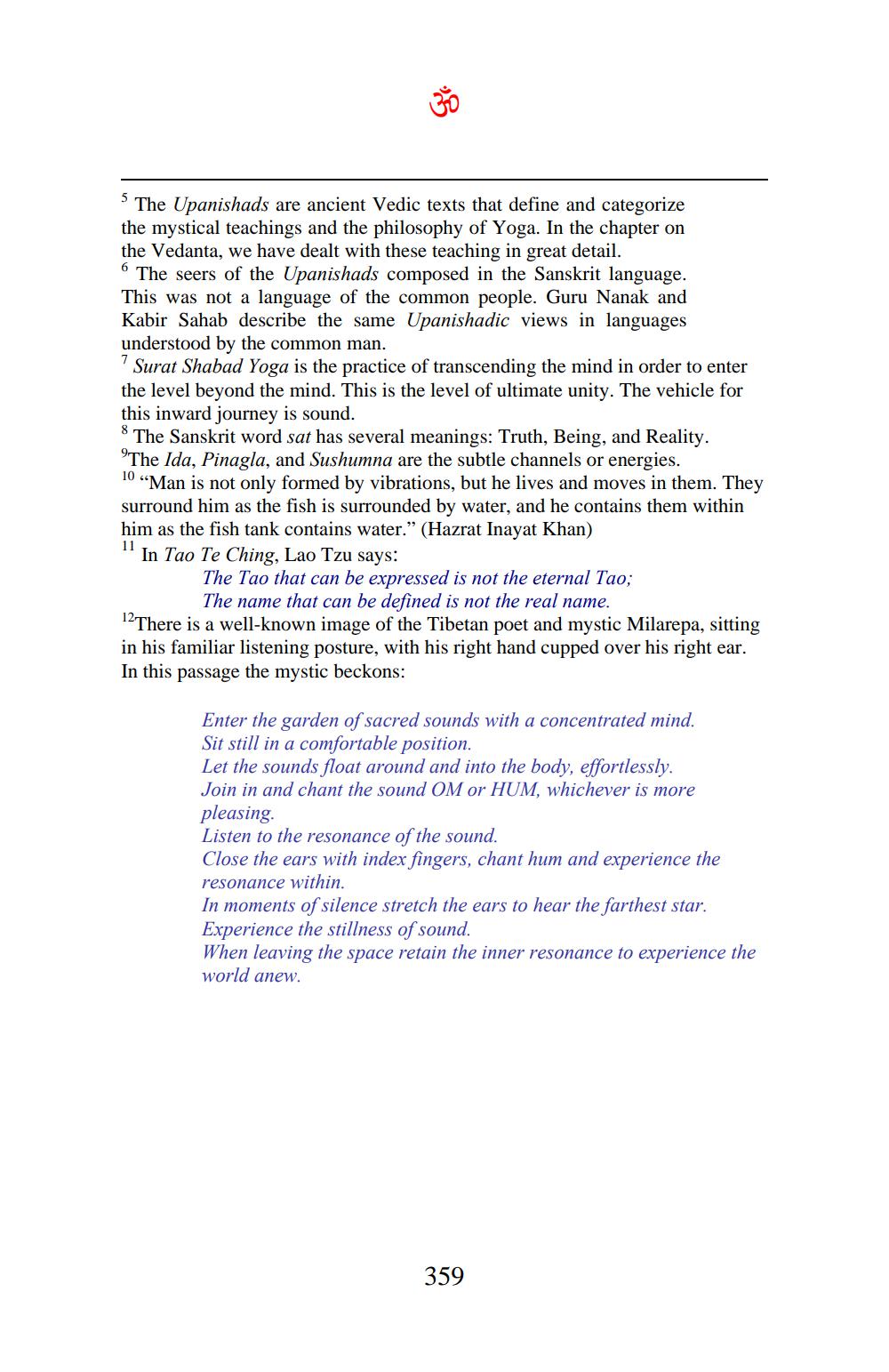________________
The Upanishads are ancient Vedic texts that define and categorize the mystical teachings and the philosophy of Yoga. In the chapter on the Vedanta, we have dealt with these teaching in great detail. • The seers of the Upanishads composed in the Sanskrit language. This was not a language of the common people. Guru Nanak and Kabir Sahab describe the same Upanishadic views in languages understood by the common man.
Surat Shabad Yoga is the practice of transcending the mind in order to enter the level beyond the mind. This is the level of ultimate unity. The vehicle for this inward journey is sound.
The Sanskrit word sat has several meanings: Truth, Being, and Reality. 'The Ida, Pinagla, and Sushumna are the subtle channels or energies. 10 «Man is not only formed by vibrations, but he lives and moves in them. They surround him as the fish is surrounded by water, and he contains them within him as the fish tank contains water." (Hazrat Inayat Khan) "In Tao Te Ching, Lao Tzu says:
The Tao that can be expressed is not the eternal Tao;
The name that can be defined is not the real name. 12There is a well-known image of the Tibetan poet and mystic Milarepa, sitting in his familiar listening posture, with his right hand cupped over his right ear. In this passage the mystic beckons:
Enter the garden of sacred sounds with a concentrated mind. Sit still in a comfortable position. Let the sounds float around and into the body, effortlessly. Join in and chant the sound OM or HUM, whichever is more pleasing Listen to the resonance of the sound. Close the ears with index fingers, chant hum and experience the resonance within. In moments of silence stretch the ears to hear the farthest star. Experience the stillness of sound. When leaving the space retain the inner resonance to experience the world anew.
359




